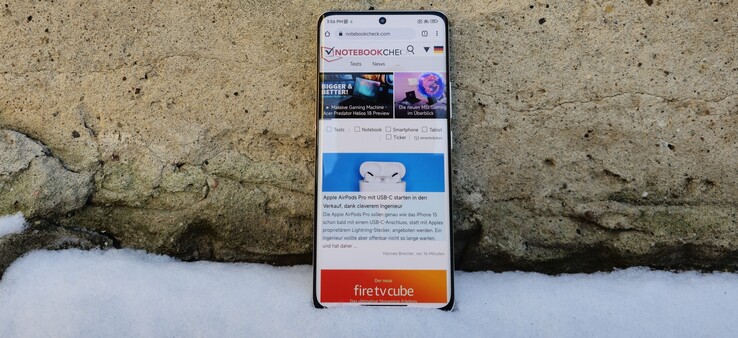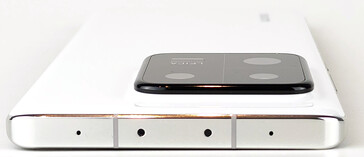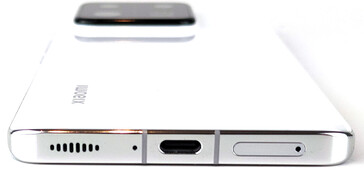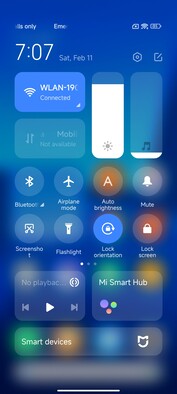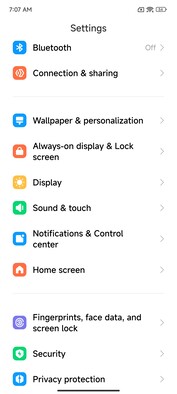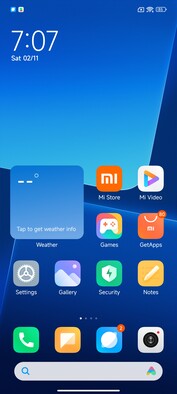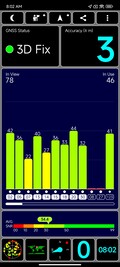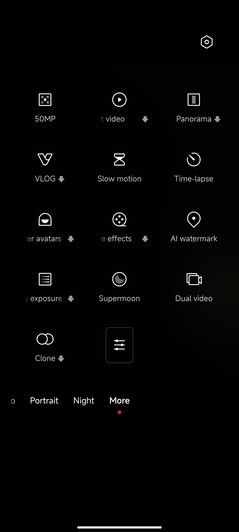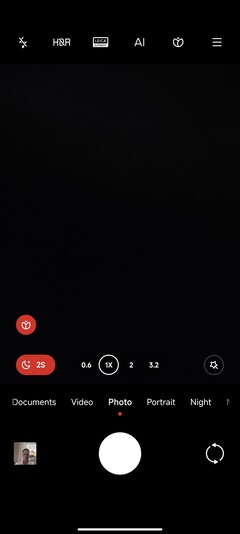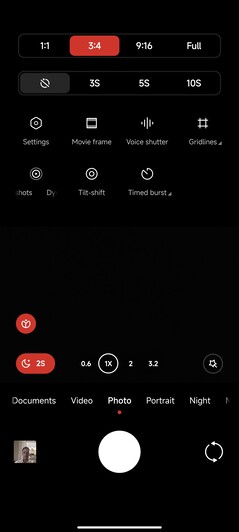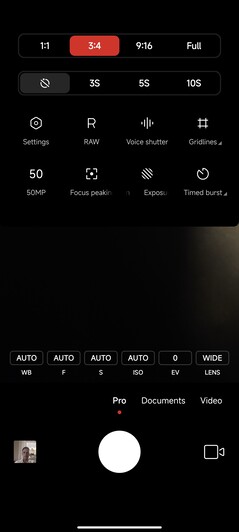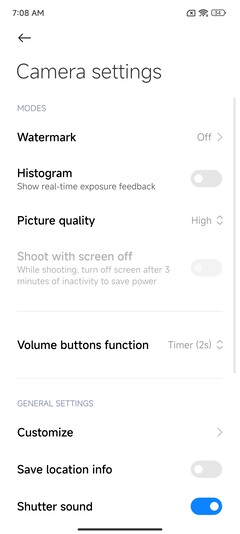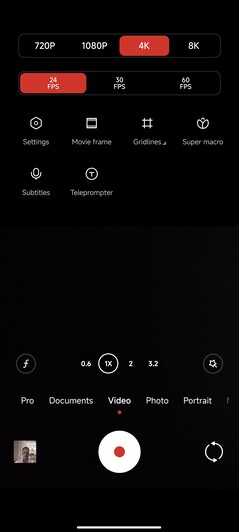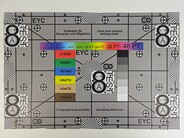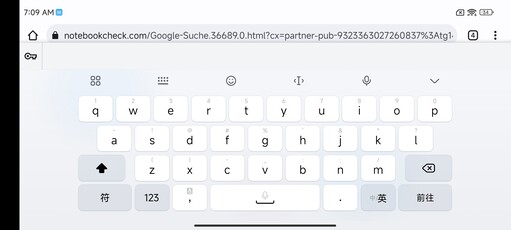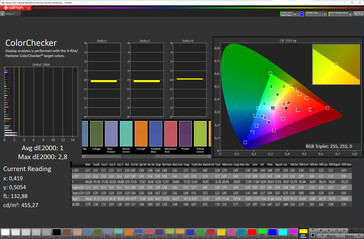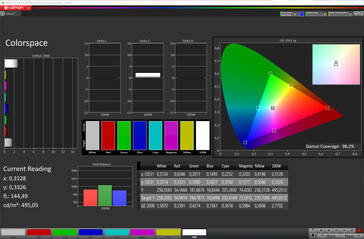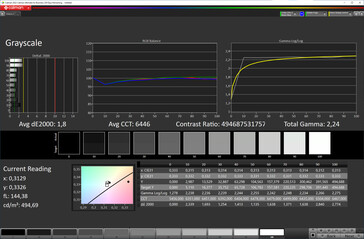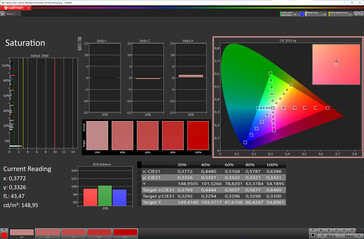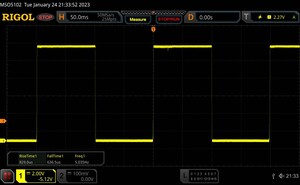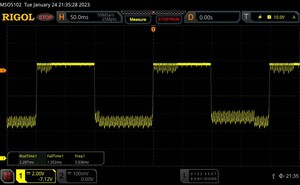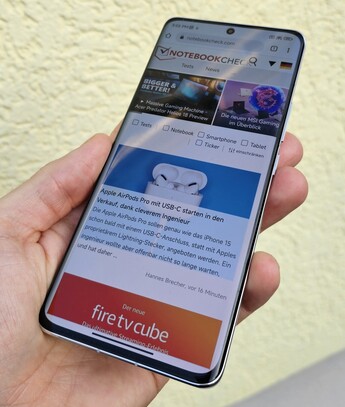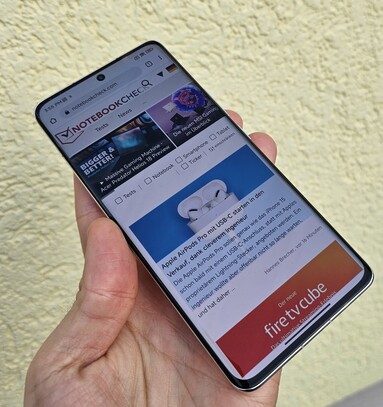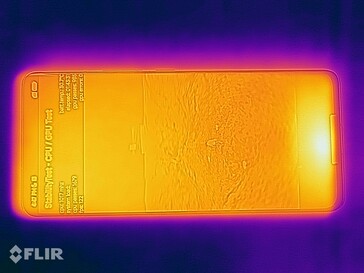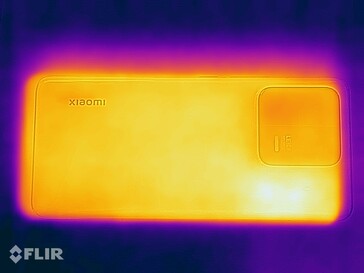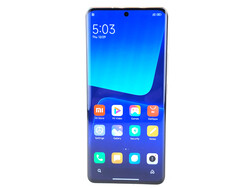Xiaomi 13 Pro review: High-quality smartphone with Leica cameras, but also two major downsides
The successor to the Xiaomi 12 Pro has already been available on the Chinese market since the end of last year and, as expected, draws on very powerful components. In addition to fast LPDDR5X RAM and UFS 4.0 storage, the Xiaomi 13 Pro employs the Qualcomm Snapdragon 8 Gen 2. An international launch is still pending, but it should be in a few weeks - the end of February seems likely. As an import device, prices start at around US$800 for the entry-level version with 8 GB RAM and 256 GB internal storage.
The current flagship (at least until the introduction of the anticipated Ultra model) of the Chinese manufacturer focuses primarily on photography. As with the 12S models, the camera system of the 13 Pro has been created in cooperation with German company Leica. The 1-inch Sony IMX989, known from the 12S Ultra, serves as the basis for the main camera, which should guarantee good photos. But the new 50-megapixel telephoto camera with the "floating element" feature for close-ups of up to 10 cm also sounds very promising.
Possible Competitors in Comparison
Rating | Date | Model | Weight | Drive | Size | Resolution | Price |
|---|---|---|---|---|---|---|---|
| 89.2 % v7 (old) | 03 / 2023 | Xiaomi 13 Pro SD 8 Gen 2, Adreno 740 | 229 g | 256 GB UFS 4.0 Flash | 6.73" | 3200x1440 | |
| 87.6 % v7 (old) | 02 / 2022 | Xiaomi 12 Pro SD 8 Gen 1, Adreno 730 | 204 g | 256 GB UFS 3.1 Flash | 6.73" | 3200x1440 | |
| 90 % v7 (old) | 02 / 2023 | Vivo X90 Pro+ SD 8 Gen 2, Adreno 740 | 221 g | 256 GB UFS 4.0 Flash | 6.78" | 3200x1440 | |
| 89.1 % v7 (old) | 11 / 2022 | Google Pixel 7 Pro Tensor G2, Mali-G710 MP7 | 212 g | 128 GB UFS 3.1 Flash | 6.70" | 3120x1440 | |
| 89.4 % v7 (old) | 03 / 2022 | Samsung Galaxy S22 Ultra 5G Exynos 2200, Xclipse 920 | 228 g | 128 GB UFS 3.1 Flash | 6.80" | 3088x1440 | |
| 88.9 % v7 (old) | 11 / 2022 | Huawei Mate 50 Pro SD 8+ Gen 1, Adreno 730 | 209 g | 256 GB UFS 3.1 Flash | 6.70" | 2616x1212 |
Case - Xiaomi 13 Pro in ceramic
The Xiaomi 13 Pro can be purchased in four colors: black, white, light green and light blue. The first three color variants have a back made of "nanobiological" ceramic, while the light blue variant has a imitation leather-like surface that, according to the manufacturer, is very dirt-resistant in everyday use. Our white review sample has a high-gloss finish which doesn't really seem to attract fingerprints.
The Xiaomi smartphone is dustproof and waterproof according to IP68 and feels very high-quality. Corning Gorilla Glass Victus is used on the front, which protects the slightly curved 6.73-inch OLED panel from scratches. The edges around the screen are narrow, but the display-to-surface ratio of 89.2 percent is slightly below that of a Galaxy S23 Ultra.
Equipment - Xiaomi smartphone with IR blaster
Xiaomi has given its 13 Pro fast UFS 4.0 storage with a capacity of 256 GB or 512 GB. When choosing the storage, it should be borne in mind that microSD support is absent. In terms of USB speed, Xiaomi does not specify the type of USB-C port installed on its Chinese website, but a fast USB 3.2 port of the 1st or 2nd generation, which works with a high data transfer rate and supports wired image output, continues to be sadly absent. The 2.0 standard is again used here.
Other hardware features of the Xiaomi smartphone include Bluetooth 5.3, a UWB chip, wireless image transmission of screen content (Miracast), an IR blaster, and USB OTG for quick connection of external accessories such as a USB stick. An NFC chip is of course also available, including Play Protect certification.
Software - Xiaomi 13 Pro with Android 13
Xiaomi combines the Android 13 with its own MIUI user interface in version 14. However, the security patches from October 2022 are not kept quite up to date.
The update guarantee of the Xiaomi 12 series, i.e. three major Android updates and four years of security updates, will probably also apply to the 13 series in Europe - Xiaomi's high-end smartphones will thus be updated up to Android 16 and MIUI 17. Buyers of a Galaxy smartphone of the S series, however, still get a little more support with four major Android updates and five years of security patches.
As usual with Chinese versions, our review sample does not support Google services ex works, such as the PlayStore. Instead, Chinese services and Xiaomi's own services are used. But unlike Huawei smartphones, you don't have to do without Google services. The Google Services Framework is already preinstalled upon delivery, so only the PlayStore has to be installed manually via the in-house app store. Apart from Chinese and English, however, no other system languages can be selected.
Communication and GNSS - Xiaomi 13 Pro with WiFi 7
Inside the home WLAN, the Xiaomi 13 Pro offers the fast ax standard with WiFi 7, including the 6 GHz frequency range, which, together with the (MU-)MIMO technology, ensured very high transfer rates in our measurements. In combination with our Asus ROG Rapture GT-AXE11000 reference router, the Xiaomi smartphone achieved over 1,800 MBit/s in the 6 GHz range and almost 1,000 MBit/s when transmitting below 5 GHz.
In addition to the fast WLAN module, the 13 Pro makes use of the Snapdragon X70 modem, including the 5G standard, but without mmWave support. In addition, our Chinese version of the Xiaomi smartphone supports access to a total of 16 LTE bands - but bands 20 and 28, which are relevant for German-speaking countries, are missing. This problem will be fixed with the release of the European variant of the Xiaomi 13 Pro, analogous to the Xiaomi 12 Pro, which features significantly more LTE frequencies than its Chinese counterpart.
| Networking | |
| Xiaomi 13 Pro | |
| iperf3 receive AXE11000 | |
| iperf3 transmit AXE11000 | |
| iperf3 transmit AXE11000 6GHz | |
| iperf3 receive AXE11000 6GHz | |
| Xiaomi 12 Pro | |
| iperf3 receive AXE11000 | |
| iperf3 transmit AXE11000 | |
| Vivo X90 Pro+ | |
| iperf3 receive AXE11000 | |
| iperf3 transmit AXE11000 | |
| Google Pixel 7 Pro | |
| iperf3 receive AXE11000 | |
| iperf3 transmit AXE11000 | |
| iperf3 transmit AXE11000 6GHz | |
| iperf3 receive AXE11000 6GHz | |
| Samsung Galaxy S22 Ultra 5G | |
| iperf3 receive AXE11000 | |
| iperf3 transmit AXE11000 | |
| iperf3 transmit AXE11000 6GHz | |
| iperf3 receive AXE11000 6GHz | |
| Huawei Mate 50 Pro | |
| iperf3 receive AXE11000 | |
| iperf3 transmit AXE11000 | |
| Average of class Smartphone | |
| iperf3 receive AXE11000 | |
| iperf3 transmit AXE11000 | |
| iperf3 transmit AXE11000 6GHz | |
| iperf3 receive AXE11000 6GHz | |
For localization, the Xiaomi smartphone employs a broad selection of main satellites ranging from GPS (L1+L5), GLONASS (G1), BeiDou (B1 + B1C+ B2a), Galileo (E1+E5a) to QZSS (L1 + L5). To determine positioning accuracy in real-world practice, we took our review sample on a short bike ride and recorded the route in parallel with a Garmin Venu 2 for comparison purposes.
The tracking capabilities of the 13 Pro are solid for the most part. However, deviations from the selected routes are visible in the detailed view of the GPS recording, especially when changing direction. Nevertheless, the Xiaomi smartphone is very suitable for navigation tasks despite minor inaccuracies.
Telephony and Voice Quality - Xiaomi smartphone with dual SIM
The Xiaomi 13 Pro offers a full dual-SIM with two nano-SIM card slots, but eSIM is not supported. Functions such as VoLTE and Wi-Fi calls are available. The built-in microphones ensure a natural speech experience, which is somewhat impaired by minor background noise. In speaker mode, a slight echo is present.
Cameras - Xiaomi smartphone with 1-inch sensor
Not much has changed in the front camera of the Xiaomi 13 Pro compared to its predecessor. The selfie cam has a high resolution of 32 MP and delivers very impressive photos with a high level of detail. However, it is noticeable that images are greatly overexposed in "Classic mode".
Despite the high resolution of the front camera, video recordings are only possible at a maximum of 1080p at 30 fps. Competing smartphones, such as the Samsung Galaxy S22 Ultra, offer significantly more with UHD quality at 60 fps.
On the back is the 1-inch Sony IMX989 known from the Xiaomi 12S Ultra, complete with OIS. As with the 12S models, Xiaomi advertises its collaboration with Leica, which revolves not only around the software, but also includes an optical ALD coating of the lenses. The photos have extensive image dynamics and lots of detail. Thanks to the 1-inch sensor, backgrounds are mostly blurred, even in photo mode, which gives the photos a special touch. Photos taken with the Xiaomi 13 Pro are not as over-sharpened as is often the case with the competition, but we occasionally find the photos a little too soft. In addition to a very interesting 50 MP telephoto macro camera (including OIS), the main camera is supported by an ultra-wide-angle cam, also with 50 megapixels.
Leica offers the "Vibrant" and "Authentic" modes in the camera software. The first mode makes colors more saturated and brighter, while the second reproduces "Leica style" shots, which accentuate light and shadowy areas. Our image comparison shots were taken in "Leica Authentic" mode.
The telephoto lens with its 3.2x lossless zoom is based on the in-house Liquid Lens design, which includes a floating lens group. The lens is divided into two groups that can be moved internally, allowing a focus range from 10 cm to theoretical infinity. Zoomed photos have a solid basic sharpness up to a fivefold magnification, which is a clear improvement over the predecessor. Nevertheless, other high-end smartphones, such as the Vivo X90 Pro+, have significantly better zoom qualities.
The ultra-wide-angle camera controls the lens curvature very well; we did not detect any chromatic aberrations. However, the sharpness level is not very pronounced, especially in the peripheral areas.
The Xiaomi 13 Pro records moving pictures with the main camera at a maximum of 8K at 24 fps. UHD quality videos can be recorded at up to 60 frames per second. Switching between lenses is only possible when recording in 1080p.
Image comparison
Choose a scene and navigate within the first image. One click changes the position on touchscreens. One click on the zoomed-in image opens the original in a new window. The first image shows the scaled photograph of the test device.
Main cameraMain cameraLow lightUltra wide angleZoom 5xWe took a closer look at the imaging performance of the 1-inch Sony sensor under controlled lighting conditions. In the P3 profile, the built-in OLED panel of the Xiaomi 13 Pro is able to completely cover the color space, which is quite large compared to sRGB, so that the wide color space of the Leica calibration can also be displayed completely. Deviations from the reference colors are within a typical smartphone range; colors are often reproduced a little too brightly, especially in the green tones.
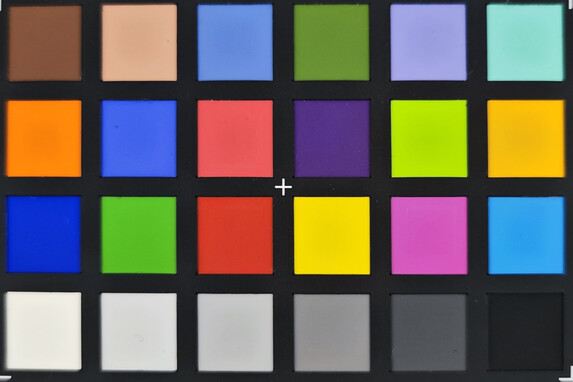
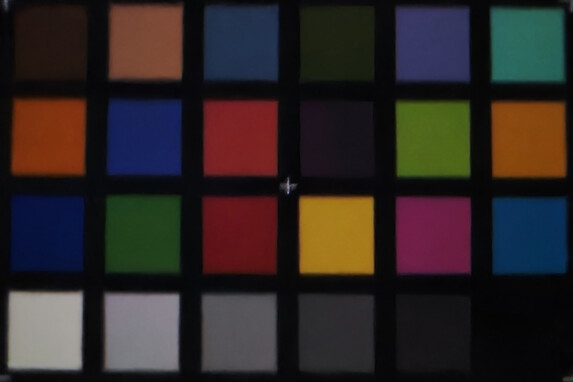
Accessories and Warranty - Xiaomi 13 Pro with power supply unit
The Chinese version of the Xiaomi 13 Pro comes with a modular 120-watt power supply, a USB cable and a protective case shell. It is questionable to what extent the global version will benefit from the charger, as this had to be purchased separately in Germany in the case of the predecessor. A protective film is also installed ex works. In addition, our lender TradingShenzhen also supplied an EU adapter for the charger and a USB-OTG adapter to our Chinese version.
The warranty for the Xiaomi smartphone is 12 months. This may differ in other countries, so buyers should double-check with the seller before purchase.
Input Devices & Operation - Xiaomi Phone with FaceUnlock
The capacitive touchscreen of the Xiaomi smartphone is protected by Corning Gorilla Glass Victus and has excellent gliding properties. The touch-sensitive surface implements inputs precisely and has a refresh rate of 240 per second thanks to the high sampling rate (240 Hz). As in the predecessor, the vibration motor provides crisp, haptically appealing feedback.
An optical fingerprint scanner is again integrated into the display for biometric security. Xiaomi does without the advantages of an ultrasound-based method, like Samsung or Vivo, but the inbuilt sensor reacts quickly and reliably. Biometric facial recognition can also be used via the front camera, but this is not very secure due to the 2D process.
Display - Xiaomi smartphone with OLED
The 6.73-inch LTPO AMOLED display, slightly curved on the sides, comes from Samsung and offers a WQHD+ resolution with a dynamic refresh rate from 1 Hz up to 120 Hz - we can also access these values in the system data. However, in order to be able to enjoy the high pixel density of the 10-bit panel (521 ppi), the factory default FullHD+ resolution must first be deactivated in the settings.
The maximum brightness of the Xiaomi 13 Pro is specified as 1,900 nits. On a pure white surface, the AMOLED panel achieves a peak value of a very good 1290 cd/m² in our measurements. If we throw in some dark areas on the display, the brightness increases significantly and reaches 1,798 cd/m² in the APL18 test. So the Xiaomi smartphone indeed comes very close to the manufacturer's specifications in our measurements. This has often not been the case in the recent past.
Like all OLED displays, the Xiaomi 13 Pro's screen flickers across the entire brightness spectrum. We measured a frequency of 120 Hz up to a brightness of 59 percent with a flat amplitude curve. The panel flickers between 361 and 366 Hz above this brightness limit.
| |||||||||||||||||||||||||
Brightness Distribution: 94 %
Center on Battery: 1230 cd/m²
Contrast: ∞:1 (Black: 0 cd/m²)
ΔE ColorChecker Calman: 1 | ∀{0.5-29.43 Ø4.83}
ΔE Greyscale Calman: 1.8 | ∀{0.09-98 Ø5.1}
98.2% sRGB (Calman 2D)
Gamma: 2.24
CCT: 6446 K
| Xiaomi 13 Pro OLED, 3200x1440, 6.7" | Xiaomi 12 Pro AMOLED, 3200x1440, 6.7" | Vivo X90 Pro+ AMOLED, 3200x1440, 6.8" | Google Pixel 7 Pro OLED, 3120x1440, 6.7" | Samsung Galaxy S22 Ultra 5G Dynamic AMOLED, 3088x1440, 6.8" | Huawei Mate 50 Pro AMOLED, 2616x1212, 6.7" | |
|---|---|---|---|---|---|---|
| Screen | -11% | -6% | 7% | 3% | -15% | |
| Brightness middle | 1230 | 959 -22% | 1109 -10% | 1022 -17% | 1077 -12% | 940 -24% |
| Brightness | 1244 | 977 -21% | 1124 -10% | 1025 -18% | 1093 -12% | 945 -24% |
| Brightness Distribution | 94 | 96 2% | 96 2% | 99 5% | 97 3% | 92 -2% |
| Black Level * | ||||||
| Colorchecker dE 2000 * | 1 | 1.1 -10% | 1.1 -10% | 0.9 10% | 1.2 -20% | 1.18 -18% |
| Colorchecker dE 2000 max. * | 2.8 | 3.1 -11% | 2.7 4% | 2.1 25% | 2 29% | 2.86 -2% |
| Greyscale dE 2000 * | 1.8 | 1.9 -6% | 2 -11% | 1.1 39% | 1.3 28% | 2.1 -17% |
| Gamma | 2.24 98% | 2.22 99% | 2.25 98% | 2.22 99% | 2.37 93% | 2.217 99% |
| CCT | 6446 101% | 6498 100% | 6605 98% | 6650 98% | 6526 100% | 6352 102% |
* ... smaller is better
Screen Flickering / PWM (Pulse-Width Modulation)
| Screen flickering / PWM detected | 120 Hz | ||
The display backlight flickers at 120 Hz (worst case, e.g., utilizing PWM) . The frequency of 120 Hz is very low, so the flickering may cause eyestrain and headaches after extended use. In comparison: 53 % of all tested devices do not use PWM to dim the display. If PWM was detected, an average of 8327 (minimum: 5 - maximum: 343500) Hz was measured. | |||
Series of measurements at a fixed zoom level and different brightness settings
The Xiaomi smartphone has three color profiles and a "Customized" mode where the color space, temperature and intensity can be adjusted. We examined the color calibration of the AMOLED panel using Calman analysis software.
In factory settings (profile: original), the sRGB color space is controlled and also covered to a large extent. Our measured DeltaE values indicate a very small deviation in the colors (1.0). Minimal differences can be seen in magenta. The reproduction of grayscale also reveals a small deviation within the target range (<3).
Display Response Times
| ↔ Response Time Black to White | ||
|---|---|---|
| 1.47 ms ... rise ↗ and fall ↘ combined | ↗ 0.829 ms rise | |
| ↘ 0.6365 ms fall | ||
| The screen shows very fast response rates in our tests and should be very well suited for fast-paced gaming. In comparison, all tested devices range from 0.1 (minimum) to 240 (maximum) ms. » 7 % of all devices are better. This means that the measured response time is better than the average of all tested devices (20.5 ms). | ||
| ↔ Response Time 50% Grey to 80% Grey | ||
| 3.64 ms ... rise ↗ and fall ↘ combined | ↗ 2.287 ms rise | |
| ↘ 1.352 ms fall | ||
| The screen shows very fast response rates in our tests and should be very well suited for fast-paced gaming. In comparison, all tested devices range from 0.165 (minimum) to 636 (maximum) ms. » 13 % of all devices are better. This means that the measured response time is better than the average of all tested devices (32.1 ms). | ||
Performance - Xiaomi 13 Pro with Qualcomm SoC
In the Android camp at present, it doesn't get much faster than the Xiaomi 13 Pro. The Snapdragon 8 Gen 2 performs very well in our benchmarks and usually leaves the competition behind. The reason for this is the new cryo CPU consisting of four clusters with various ARM architectures, including the fast prime core (Cortex-X3) with up to 3.2 GHz.
The Qualcomm SoC performs very well in benchmark testing. The multi-core value in particular is very high in Geekbench. Here, Xiaomi has been able to increase performance by more than a third compared to the 12 Pro. The Qualcomm SoC also performs well in PCMark.
| UL Procyon AI Inference for Android - Overall Score NNAPI | |
| Xiaomi 12 Pro | |
| Google Pixel 7 Pro | |
| Average of class Smartphone (1267 - 81594, n=142, last 2 years) | |
| Vivo X90 Pro+ | |
| Xiaomi 13 Pro | |
| Average Qualcomm Snapdragon 8 Gen 2 (11338 - 16880, n=21) | |
| Samsung Galaxy S22 Ultra 5G | |
| Huawei Mate 50 Pro | |
In graphics testing, the Adreno 740 also performs very well and is sometimes almost 20 percent ahead of the Vivo X90 Pro+, which also uses the Snapdragon 8 Gen 2.
GFXBench (DX / GLBenchmark) 2.7: T-Rex Onscreen | 1920x1080 T-Rex Offscreen
GFXBench 3.0: on screen Manhattan Onscreen OGL | 1920x1080 1080p Manhattan Offscreen
GFXBench 3.1: on screen Manhattan ES 3.1 Onscreen | 1920x1080 Manhattan ES 3.1 Offscreen
GFXBench: on screen Car Chase Onscreen | 1920x1080 Car Chase Offscreen | on screen Aztec Ruins High Tier Onscreen | 2560x1440 Aztec Ruins High Tier Offscreen | on screen Aztec Ruins Normal Tier Onscreen | 1920x1080 Aztec Ruins Normal Tier Offscreen
| 3DMark / Wild Life Extreme Unlimited | |
| Xiaomi 13 Pro | |
| Vivo X90 Pro+ | |
| Huawei Mate 50 Pro | |
| Xiaomi 12 Pro | |
| Samsung Galaxy S22 Ultra 5G | |
| Google Pixel 7 Pro | |
| 3DMark / Wild Life Extreme | |
| Xiaomi 13 Pro | |
| Vivo X90 Pro+ | |
| Huawei Mate 50 Pro | |
| Xiaomi 12 Pro | |
| Samsung Galaxy S22 Ultra 5G | |
| Google Pixel 7 Pro | |
| 3DMark / Wild Life Unlimited Score | |
| Vivo X90 Pro+ | |
| Xiaomi 13 Pro | |
| Huawei Mate 50 Pro | |
| Xiaomi 12 Pro | |
| Samsung Galaxy S22 Ultra 5G | |
| Google Pixel 7 Pro | |
| GFXBench (DX / GLBenchmark) 2.7 / T-Rex Onscreen | |
| Xiaomi 12 Pro | |
| Google Pixel 7 Pro | |
| Vivo X90 Pro+ | |
| Xiaomi 13 Pro | |
| Samsung Galaxy S22 Ultra 5G | |
| Huawei Mate 50 Pro | |
| GFXBench (DX / GLBenchmark) 2.7 / T-Rex Offscreen | |
| Xiaomi 13 Pro | |
| Vivo X90 Pro+ | |
| Huawei Mate 50 Pro | |
| Xiaomi 12 Pro | |
| Samsung Galaxy S22 Ultra 5G | |
| Google Pixel 7 Pro | |
| GFXBench 3.0 / Manhattan Onscreen OGL | |
| Xiaomi 13 Pro | |
| Vivo X90 Pro+ | |
| Xiaomi 12 Pro | |
| Samsung Galaxy S22 Ultra 5G | |
| Google Pixel 7 Pro | |
| Huawei Mate 50 Pro | |
| GFXBench 3.0 / 1080p Manhattan Offscreen | |
| Xiaomi 13 Pro | |
| Vivo X90 Pro+ | |
| Huawei Mate 50 Pro | |
| Xiaomi 12 Pro | |
| Samsung Galaxy S22 Ultra 5G | |
| Google Pixel 7 Pro | |
| GFXBench 3.1 / Manhattan ES 3.1 Onscreen | |
| Xiaomi 13 Pro | |
| Vivo X90 Pro+ | |
| Xiaomi 12 Pro | |
| Samsung Galaxy S22 Ultra 5G | |
| Huawei Mate 50 Pro | |
| Google Pixel 7 Pro | |
| GFXBench 3.1 / Manhattan ES 3.1 Offscreen | |
| Xiaomi 13 Pro | |
| Vivo X90 Pro+ | |
| Huawei Mate 50 Pro | |
| Xiaomi 12 Pro | |
| Samsung Galaxy S22 Ultra 5G | |
| Google Pixel 7 Pro | |
| GFXBench / Car Chase Onscreen | |
| Xiaomi 13 Pro | |
| Vivo X90 Pro+ | |
| Huawei Mate 50 Pro | |
| Samsung Galaxy S22 Ultra 5G | |
| Google Pixel 7 Pro | |
| Xiaomi 12 Pro | |
| GFXBench / Car Chase Offscreen | |
| Vivo X90 Pro+ | |
| Xiaomi 13 Pro | |
| Huawei Mate 50 Pro | |
| Xiaomi 12 Pro | |
| Samsung Galaxy S22 Ultra 5G | |
| Google Pixel 7 Pro | |
| GFXBench / Aztec Ruins High Tier Onscreen | |
| Huawei Mate 50 Pro | |
| Xiaomi 13 Pro | |
| Vivo X90 Pro+ | |
| Samsung Galaxy S22 Ultra 5G | |
| Google Pixel 7 Pro | |
| Xiaomi 12 Pro | |
| GFXBench / Aztec Ruins High Tier Offscreen | |
| Vivo X90 Pro+ | |
| Xiaomi 13 Pro | |
| Huawei Mate 50 Pro | |
| Xiaomi 12 Pro | |
| Google Pixel 7 Pro | |
| Samsung Galaxy S22 Ultra 5G | |
| GFXBench / Aztec Ruins Normal Tier Onscreen | |
| Huawei Mate 50 Pro | |
| Xiaomi 13 Pro | |
| Vivo X90 Pro+ | |
| Xiaomi 12 Pro | |
| Samsung Galaxy S22 Ultra 5G | |
| Google Pixel 7 Pro | |
| GFXBench / Aztec Ruins Normal Tier Offscreen | |
| Xiaomi 13 Pro | |
| Vivo X90 Pro+ | |
| Huawei Mate 50 Pro | |
| Xiaomi 12 Pro | |
| Google Pixel 7 Pro | |
| Samsung Galaxy S22 Ultra 5G | |
In everyday use, as well as when browsing with Chrome, the Xiaomi smartphone leaves an excellent impression. The perceived speed as well as the benchmark results are first-class.
| Jetstream 2 - 2.0 Total Score | |
| Average of class Smartphone (13.8 - 387, n=154, last 2 years) | |
| Xiaomi 13 Pro (Chrome 109) | |
| Average Qualcomm Snapdragon 8 Gen 2 (62.7 - 179.2, n=23) | |
| Vivo X90 Pro+ (Chrome Beta 110) | |
| Google Pixel 7 Pro (Chrome 106) | |
| Samsung Galaxy S22 Ultra 5G (Chrome 99) | |
| Xiaomi 12 Pro (Chrome 97) | |
| Huawei Mate 50 Pro (Chrome 107) | |
| Speedometer 2.0 - Result | |
| Average of class Smartphone (15.2 - 585, n=137, last 2 years) | |
| Average Qualcomm Snapdragon 8 Gen 2 (62.9 - 225, n=18) | |
| Xiaomi 13 Pro (Chrome 109) | |
| Samsung Galaxy S22 Ultra 5G (Chrome 99) | |
| Google Pixel 7 Pro (Chrome 106) | |
| Xiaomi 12 Pro (Chrome 97) | |
| Huawei Mate 50 Pro (Chome 107) | |
| WebXPRT 4 - Overall | |
| Xiaomi 13 Pro (Chrome 109) | |
| Vivo X90 Pro+ (Chrome Beta 110) | |
| Average of class Smartphone (22 - 273, n=149, last 2 years) | |
| Average Qualcomm Snapdragon 8 Gen 2 (28 - 183, n=22) | |
| Google Pixel 7 Pro (Chrome 106) | |
| Huawei Mate 50 Pro (Chrome 107) | |
| Octane V2 - Total Score | |
| Average Qualcomm Snapdragon 8 Gen 2 (19870 - 65418, n=25) | |
| Average of class Smartphone (2228 - 100368, n=204, last 2 years) | |
| Google Pixel 7 Pro (Chrome 106) | |
| Xiaomi 13 Pro (Chrome 109) | |
| Samsung Galaxy S22 Ultra 5G (Chrome 99) | |
| Xiaomi 12 Pro (Chrome 97) | |
| Vivo X90 Pro+ (Chrome Beta 110) | |
| Huawei Mate 50 Pro (Chrome 107) | |
| Mozilla Kraken 1.1 - Total | |
| Vivo X90 Pro+ (Chrome Beta 110) | |
| Huawei Mate 50 Pro (Chrome 107) | |
| Xiaomi 12 Pro (Chrome 97) | |
| Average of class Smartphone (277 - 28190, n=158, last 2 years) | |
| Samsung Galaxy S22 Ultra 5G (Chrome 99) | |
| Average Qualcomm Snapdragon 8 Gen 2 (602 - 1837, n=22) | |
| Google Pixel 7 Pro (Chrome 106) | |
| Xiaomi 13 Pro (Chrome 109) | |
* ... smaller is better
As expected, the speed of the UFS 4.0 storage is very high. The measured values are over 3,500 MB/s for reading and thus more than twice as high than in the 12 Pro. In everyday use, however, these differences are hardly noticeable.
| Xiaomi 13 Pro | Xiaomi 12 Pro | Vivo X90 Pro+ | Google Pixel 7 Pro | Samsung Galaxy S22 Ultra 5G | Huawei Mate 50 Pro | Average 256 GB UFS 4.0 Flash | Average of class Smartphone | |
|---|---|---|---|---|---|---|---|---|
| AndroBench 3-5 | -33% | -3% | -57% | -45% | -41% | -4% | -34% | |
| Sequential Read 256KB | 3587.83 | 1620 -55% | 3397.4 -5% | 1346.78 -62% | 1653 -54% | 1835.8 -49% | 3715 ? 4% | 2158 ? -40% |
| Sequential Write 256KB | 2601.45 | 1465 -44% | 2834.4 9% | 874.73 -66% | 1074 -59% | 1104.8 -58% | 2739 ? 5% | 1749 ? -33% |
| Random Read 4KB | 387.72 | 324.9 -16% | 373.88 -4% | 219.01 -44% | 322.3 -17% | 263.4 -32% | 383 ? -1% | 294 ? -24% |
| Random Write 4KB | 546.98 | 448.9 -18% | 484.29 -11% | 253.18 -54% | 273.1 -50% | 423.6 -23% | 412 ? -25% | 336 ? -39% |
Gaming - Xiaomi smartphone manages 120 fps
In order to assess the graphics power of the GPU unit in everyday use, we took a closer look at a few Android titles with the software tool from our partner GameBench. On paper, the strong Qualcomm-SoC and a fast 120 Hz OLED display with short response times of less than 4 ms promise a lot of gaming fun.
However, Armajet reveals relatively poor values. At first, we observed a high frame rate close to the OLED panel's native frame rate, but this steadily decreases over a very short period of time. The arena shooter theoretically supports the full 120 Hz of the display, but the Xiaomi 13 Pro only manages a meager 63 fps on average. It is unclear why the refresh rate is so low, because it is not due to thermal problems. In PUBG Mobile, on the other hand, the typical 60 fps is possible in HD, while the flagship operates at a constant 40 fps at the highest detail level (UHD).
Emissions - Xiaomi 13 Pro remains quite stable
Temperature
The case of the Xiaomi 13 Pro hardly heats up under load. The Chinese manufacturer uses a very thin heat-dissipating material to cool the heat source area. The maximum temperatures registered were within a safe range at a maximum of 33 °C. However, the heat development inside the flagship smartphone results in a performance reduction of the Qualcomm SoC.
The Wild Life stress tests clearly show that performance drops by about 10 to 20 percent with increasing load, which is a decent value for a Snapdragon 8 Gen 2 smartphone.
(+) The maximum temperature on the upper side is 32.9 °C / 91 F, compared to the average of 35.1 °C / 95 F, ranging from 21.9 to 63.7 °C for the class Smartphone.
(+) The bottom heats up to a maximum of 28.9 °C / 84 F, compared to the average of 33.9 °C / 93 F
(+) In idle usage, the average temperature for the upper side is 26.1 °C / 79 F, compared to the device average of 32.9 °C / 91 F.
3DMark Wild Life Stress Test
| 3DMark | |
| Wild Life Stress Test Stability | |
| Vivo X90 Pro+ | |
| Xiaomi 13 Pro | |
| Google Pixel 7 Pro | |
| Samsung Galaxy S22 Ultra 5G | |
| Xiaomi 12 Pro | |
| Huawei Mate 50 Pro | |
| Wild Life Extreme Stress Test | |
| Xiaomi 13 Pro | |
| Vivo X90 Pro+ | |
| Google Pixel 7 Pro | |
| Samsung Galaxy S22 Ultra 5G | |
| Huawei Mate 50 Pro | |
| Xiaomi 12 Pro | |
Speakers
The stereo speakers of the Xiaomi 13 Pro have again been optimized by Harman Kardon and give a very good impression. The mids and highs are balanced and even the upper bass ranges are somewhat audible. However, a drop in the pink noise diagram can be seen for the super tweeters.
Alternatively, headphones can be connected via the USB-C port or wirelessly via Bluetooth 5.3. The Xiaomi 13 Pro uses a wide range of supported Bluetooth codecs (SBC, AAC, aptX, aptX HD, aptX Adaptive, aptX TWS+, LDAC and LHDC).
Xiaomi 13 Pro audio analysis
(+) | speakers can play relatively loud (88.5 dB)
Bass 100 - 315 Hz
(-) | nearly no bass - on average 21.7% lower than median
(±) | linearity of bass is average (8.6% delta to prev. frequency)
Mids 400 - 2000 Hz
(+) | balanced mids - only 3.8% away from median
(+) | mids are linear (5.1% delta to prev. frequency)
Highs 2 - 16 kHz
(+) | balanced highs - only 4.8% away from median
(+) | highs are linear (3.8% delta to prev. frequency)
Overall 100 - 16.000 Hz
(±) | linearity of overall sound is average (15.6% difference to median)
Compared to same class
» 3% of all tested devices in this class were better, 3% similar, 94% worse
» The best had a delta of 12%, average was 36%, worst was 134%
Compared to all devices tested
» 22% of all tested devices were better, 4% similar, 74% worse
» The best had a delta of 4%, average was 24%, worst was 134%
Samsung Galaxy S22 Ultra 5G audio analysis
(+) | speakers can play relatively loud (90.2 dB)
Bass 100 - 315 Hz
(-) | nearly no bass - on average 24.4% lower than median
(±) | linearity of bass is average (8.8% delta to prev. frequency)
Mids 400 - 2000 Hz
(±) | higher mids - on average 6.3% higher than median
(+) | mids are linear (4.8% delta to prev. frequency)
Highs 2 - 16 kHz
(±) | higher highs - on average 5.6% higher than median
(+) | highs are linear (4.1% delta to prev. frequency)
Overall 100 - 16.000 Hz
(±) | linearity of overall sound is average (18.5% difference to median)
Compared to same class
» 18% of all tested devices in this class were better, 10% similar, 72% worse
» The best had a delta of 12%, average was 36%, worst was 134%
Compared to all devices tested
» 39% of all tested devices were better, 8% similar, 53% worse
» The best had a delta of 4%, average was 24%, worst was 134%
Battery Life - Xiaomi 13 Pro with 4,820 mAh battery
Power Consumption
The Xiaomi 13 Pro uses two proprietary chips to control charging and battery management, which the Chinese manufacturer calls the "Surge Battery Management System". Charging takes place either via the USB-C port at up to 120 watts or wirelessly at a maximum of 50 watts. Reverse wireless charging at a maximum of 10 watts is also on board. In addition to MI FC 2.0, common fast charging protocols such as QC4 or PD3.0 are also supported.
The 4,820 mAh battery recharged to full capacity very quickly under testing in around 20 minutes. The power consumption of the Xiaomi 13 Pro is on par with the predecessor, and the idle value of almost 1.4 watts in particular leaves room for optimization. On the positive side, our Geekbench and GFX benchmark measurements show that the Snapdragon 8 Gen 2 in the Xiaomi smartphone requires significantly less power than, for example, the Vivo X90 Pro+.
| Off / Standby | |
| Idle | |
| Load |
|
Key:
min: | |
| Xiaomi 13 Pro 4820 mAh | Xiaomi 12 Pro 4600 mAh | Vivo X90 Pro+ 4700 mAh | Google Pixel 7 Pro 5000 mAh | Samsung Galaxy S22 Ultra 5G 5000 mAh | Huawei Mate 50 Pro 4700 mAh | Average Qualcomm Snapdragon 8 Gen 2 | Average of class Smartphone | |
|---|---|---|---|---|---|---|---|---|
| Power Consumption | -7% | -5% | 6% | -6% | -26% | -38% | -27% | |
| Idle Minimum * | 1.02 | 0.94 8% | 0.92 10% | 0.78 24% | 0.58 43% | 1.2 -18% | 1.036 ? -2% | 0.868 ? 15% |
| Idle Average * | 1.36 | 1.24 9% | 1.76 -29% | 1.61 -18% | 0.71 48% | 1.5 -10% | 1.766 ? -30% | 1.426 ? -5% |
| Idle Maximum * | 1.58 | 1.34 15% | 1.88 -19% | 1.63 -3% | 1.16 27% | 1.7 -8% | 1.94 ? -23% | 1.588 ? -1% |
| Load Average * | 4.29 | 5.7 -33% | 3.65 15% | 3.29 23% | 7.07 -65% | 6.5 -52% | 7.22 ? -68% | 7.17 ? -67% |
| Load Maximum * | 6.15 | 8.12 -32% | 6.24 -1% | 6.01 2% | 11.32 -84% | 8.7 -41% | 10.4 ? -69% | 10.8 ? -76% |
* ... smaller is better
Power Consumption: Geekbench (150 cd/m²)
Power Consumption: GFXBench (150 cd/m²)
Battery Life
A positive development is the battery life of the Xiaomi 13 Pro, which is really good even with a high QHD Plus resolution and adaptive display control. In the practical WLAN test, the Xiaomi smartphone achieved significantly longer runtimes than its predecessor in continuous video playback at around 14 hours, and 21 hours with the WLAN module deactivated.
| Xiaomi 13 Pro 4820 mAh | Xiaomi 12 Pro 4600 mAh | Vivo X90 Pro+ 4700 mAh | Google Pixel 7 Pro 5000 mAh | Samsung Galaxy S22 Ultra 5G 5000 mAh | Huawei Mate 50 Pro 4700 mAh | |
|---|---|---|---|---|---|---|
| Battery Runtime | 5% | 7% | -14% | 19% | 2% | |
| Reader / Idle | 1509 | 2036 35% | 1210 -20% | 1973 31% | 1754 16% | |
| H.264 | 1263 | 788 -38% | 1213 -4% | 1078 -15% | 1139 -10% | |
| WiFi v1.3 | 846 | 766 -9% | 905 7% | 676 -20% | 844 0% | 717 -15% |
| Load | 254 | 337 33% | 226 -11% | 410 61% | 296 17% |
Pros
Cons
Verdict on the Xiaomi 13 Pro
The Xiaomi 13 Pro cuts a better figure in many areas than last year's 12 Pro. Starting with the better camera package, the positive trend also continues with the brighter display and the waterproof case. Here, Xiaomi is on par with the competition. Those who are bothered by the slight deficits in the zoom features should take a closer look at the Vivo X90 Pro+.
The Xiaomi smartphone does not have to shy away in terms of performance either, because the Chinese manufacturer extracts a lot of performance out of the Snapdragon 8 Gen 2 and is even able to close the gap to the Apple A16 Bionic of the Apple iPhone 14 Pro Max in some cases (Geekbench Multi-Score). Owing to the efficiency of the Qualcomm SoC, the Xiaomi 13 Pro also boasts a very appealing battery life.
The Xiaomi 13 Pro gets a lot of things right. We only hope that Xiaomi will soon run out of obsolete USB components.
As with previous generations of premium smartphones from Xiaomi, we again cannot understand two points in regard to the hardware. Firstly, the Chinese manufacturer has once again installed a slow USB 2.0 port without the option of image output in its 2023 reference model, although the competition has been offering better for years. Secondly, Xiaomi again fails to offer a UHD option for a front camera with 32 MPix and a resolution of 8,000 x 4,000.
Otherwise we don't find many points that speak against buying the Xiaomi 13 Pro. For those who find the Pro model too big, the Xiaomi 13 is a more compact smartphone. In the future, we would like to see longer software support á la Samsung or Google as well as a modern ultrasonic fingerprint sensor.
Price and Availability
The Xiaomi 13 Pro is yet to launch in countries outside China, but buyers can consider buying a Chinese edition that also supports English (in addition to Chinese) at Giztop.
Starting prices are listed in USD ($799.00), GBP (£711.11), EUR (€799.00), CAD ($1,110.61), AUD ($1,190.51), HKD ($6,312.10), INR (₹47,940.00), JPY (¥119,051), TWD ($24,769.00), RUB (39,950.00) and SGD ($1,086.64).
The aforementioned prices are as of 15.02.2023 and subject to change.
Xiaomi 13 Pro
- 02/13/2023 v7 (old)
Marcus Herbrich
Transparency
The selection of devices to be reviewed is made by our editorial team. The test sample was provided to the author as a loan by the manufacturer or retailer for the purpose of this review. The lender had no influence on this review, nor did the manufacturer receive a copy of this review before publication. There was no obligation to publish this review. We never accept compensation or payment in return for our reviews. As an independent media company, Notebookcheck is not subjected to the authority of manufacturers, retailers or publishers.
This is how Notebookcheck is testing
Every year, Notebookcheck independently reviews hundreds of laptops and smartphones using standardized procedures to ensure that all results are comparable. We have continuously developed our test methods for around 20 years and set industry standards in the process. In our test labs, high-quality measuring equipment is utilized by experienced technicians and editors. These tests involve a multi-stage validation process. Our complex rating system is based on hundreds of well-founded measurements and benchmarks, which maintains objectivity. Further information on our test methods can be found here.




